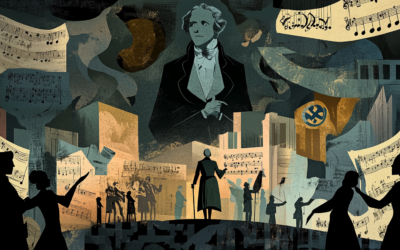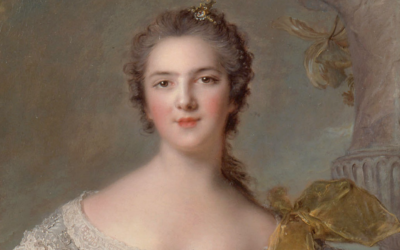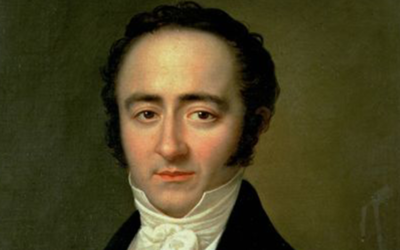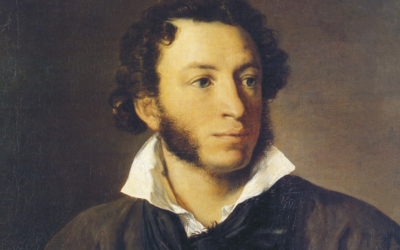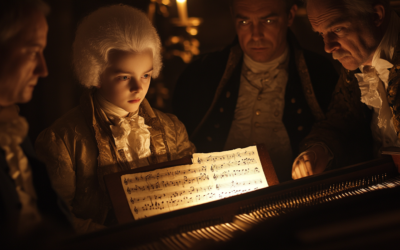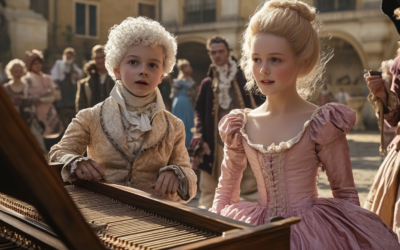The Milanese Quartets
The Uncertain Origins of Mozart's Early String Quartets
Mozart’s so-called “Milanese Quartets” (K.155, 158, and 159) have long been subject to debate, primarily due to their ambiguous instrumentation and structural weaknesses.
Often classified as “Divertimento Quartets,” these works raise questions about their intended ensemble and whether they truly belong to the string quartet genre.
Were they originally part of a series of orchestral divertimenti? Or were they hastily adapted for string quartet?
Comparisons with the revolutionary works of Cambini and Sacchini suggest Mozart was grappling with influences that far outshone his immature efforts. Even today, the “Milanese Quartets” remain a puzzle, reflecting both the promise and limitations of the young Mozart’s early development.
Mozart: The Fall of the Gods
This book compiles the results of our studies on 18th-century music and Mozart, who has been revered for over two centuries as a deity. We dismantle the baseless cult of Mozart and strip away the clichés that falsely present him as a natural genius, revealing the contradictions in conventional biographies. In this work, divided into two parts, we identify and critically analyze several contradictory points in the vast Mozart bibliography. Each of the nearly 2,000 citations is meticulously sourced, allowing readers to verify the findings. This critical biography of Mozart emerges from these premises, addressing the numerous doubts raised by researchers.
"Sometimes, it seems, Mozart had little more to say."
Mozart: The Fall of the Gods
The Uncertain Origins of Mozart’s Early String Quartets
Mozart’s so-called “Milanese Quartets” (K.155, 158, and 159) are, in fact, better described as “Divertimento Quartets.” This classification arises from the ambiguous instrumentation present in these works, which suggests they might have been intended for a more flexible ensemble. In the autograph manuscripts, the term “violini” is used to indicate both the first and second violins, while for K.158, Mozart inscribed “viole e bassi,” and for K.159, “viola e basso.” In K.155, he initially wrote “viole” but later corrected it to “viola,” adding “violoncello” above “basso.” Only in K.156 and K.160 are the four string instruments clearly specified, while K.157 lacks any indication of instrumentation altogether.
The problematic nature of the instrumentation leads some to question whether these works genuinely form a cohesive quartet cycle. As Wolfgang Plath remarked, “playing them with more instruments would sound particularly poor, especially in the slow movements.” It’s possible that Mozart initially intended to continue the orchestral series of Divertimenti K.136, K.137, and K.138 but later repurposed them as string quartets.
Thus, it’s reasonable to interpret the corrections in the autograph of K.155 as attempts to define the instrumentation for a complete cycle, implying the involvement of two violins, a viola, and a cello.
In Italy, the quartet’s roots trace back directly to the concerto form. Italian composers like Durante, Galuppi, Tartini, and Cambini demonstrated this transition from concerto to quartet through pieces that gradually reduced the overall sound while fostering a more intimate conversation between four instruments, which were now equal in rights and duties. The basso continuo, once essential, became redundant.
In contrast, the German quartet evolved from the divertimento. Here, the basso continuo also disappeared, but for more practical reasons: divertimentos were often performed outdoors, where a continuo would be unnecessary. However, these works were regarded as light, entertaining music with little expressive ambition.
The manuscript of Mozart’s first “Milanese Quartet” is a neat, clean copy, typical of most of his autographs. Nationalist fanatics assumed that Wolfgang composed without errors, but it’s more likely that the rough drafts were discarded once a fair copy was made. As Mozart completed his “Milanese Quartets,” his contemporary, Giuseppe Cambini, was publishing his Op.1 quartets in Paris, which would eventually lead to over 150 publications by 1809. A simple comparison of Cambini’s revolutionary, stylistically coherent language with Mozart’s “Milanese” quartets reveals the latter’s disjointed structures and thematic poverty.
It’s important to highlight the stylistic and historical value of Antonio Sacchini’s Op.2 quartets, written when Mozart was just twelve years old. These quartets, which were published in London in 1778 but date to the late 1760s, are considered by some as the most “Mozartian” quartets of the time. This raises the question: did Mozart hear them in Venice, alongside the works of Bertoni and Latilla?
The six quartets by Venanzio Rauzzini also demonstrate that “Mozartian” art predated Mozart himself. In the case of K.155, composed during the Mozart family’s Italian tour, we can observe the close working relationship between father and son, as they shared everything, even the composition process.
The “Milanese Quartets” exhibit several weaknesses. K.155’s Allegro is uniform, with limited conversational interaction between the instruments, and its ideas are underdeveloped. The Andante is repetitive and plagued by gratuitous effects, while the Molto Allegro’s theme is so minimalist that it fails to leave a lasting impression.
K.156 shows operatic influences but with an archaic flavour, reminiscent of Leopold Mozart’s older style. The more complex version of the Adagio was replaced by a simpler one, raising doubts about the accepted dating of the work.
The origins of these quartets remain shrouded in mystery. None of the autographs are dated, and their chronology is uncertain. Letters from Leopold mention quartets but offer vague clues as to which works they refer to. For instance, Leopold’s letter from 28 October 1772, written in Bolzano, states: “Wolfgang is bored and has started writing a quartet.” Later, on 6 February 1773, he wrote again: “Wolfgang is writing a quartet.”
Despite Einstein’s confidence that these letters refer to K.155 and K.157, Wolfgang Plath found no solid evidence to support such claims. The term “Milanese” is also misleading, as one quartet may have been composed in Bolzano, while another bears a distinctly German character.
In closing, while these early quartets show flashes of creativity, they often fall short. K.157 ends with a predictable Rondo, K.158 pays homage to the Italian violin school but lacks freedom, and K.159’s final movement feels like a caricature of courtly dances. Even the final quartet in the series, K.160, suffers from a lack of originality, particularly in its over-structured Allegro and underdeveloped Poco Adagio.
Mozart’s early quartets thus reflect the influence of his contemporaries more than any groundbreaking innovation on his part, a reminder that the young composer was still finding his voice in the shadow of greater masters.
You May Also Like
Mozart and the Nationalist Illusion: The 1931 Festival and Its Legacy
The Salzburg Festival, far from being a mere celebration of Mozart’s genius, was born out of nationalist ambitions during a turbulent period in Austro-German history. Conceived by figures like Max Reinhardt, Heinrich Damisch, and Friedrich Gehmacher, the festival was deeply rooted in ultranationalistic ideals, transforming Mozart’s legacy into a tool for cultural dominance. The truth behind its founding has long been obscured, but the primary sources tell a different, darker story.
K.6 and K.7 Sonatas: A Fabricated Genius?
The earliest sonatas of Wolfgang Amadeus Mozart, K.6 and K.7, are traditionally seen as proof of his precocious genius. But as we explore the murky origins of these works, we find that they may be more a product of Leopold Mozart’s ambition than Wolfgang’s musical talent. The truth, as always, lies somewhere between the notes.
Georg Nissen and the Missing Notebooks – Part II
This second part delves deeper into Georg Nissen’s scheme to expose the truth about Mozart’s death, and the roles of Constanze Mozart and her sons in keeping it buried. As new details emerge, the mystery surrounding the famous composer’s final days grows even darker, with powerful forces potentially at play.
Mozart and Salieri
Pushkin does not see Salieri as a mere mediocre. In fact, Salieri embodies the struggle of the artist, much like Michelangelo, who reaches greatness through relentless effort. Pushkin himself identifies with both Mozart and Salieri, but he emphasises that true art demands work, discipline, and sacrifice. In poisoning the Mozartian element within himself, Salieri performs a service to art, freeing it from the frivolity of effortless genius. ‘Can genius and malice coexist?’ Pushkin’s answer is complex, but in the end, Salieri’s act seems to affirm that true creation lies in the hands of those who strive.
The Fabrication of Genius
Leopold Mozart’s tireless efforts to promote his son Wolfgang as a child prodigy were rooted in manipulation, exaggeration, and a relentless drive for social success. Far from being a miraculous genius, Wolfgang was pushed into the spotlight by his father, whose grandiose claims often obscured the reality of his son’s abilities.
The Myth of Mozart
A critical examination of Wolfgang Amadeus Mozart’s life reveals a man shaped more by his father’s ambitions than by innate genius. Stripped of the myths, Mozart’s early years reflect a childhood dominated by relentless touring, inconsistent education, and a legacy built on exaggerated achievements. Discover the real story behind the legend.


